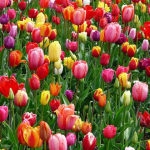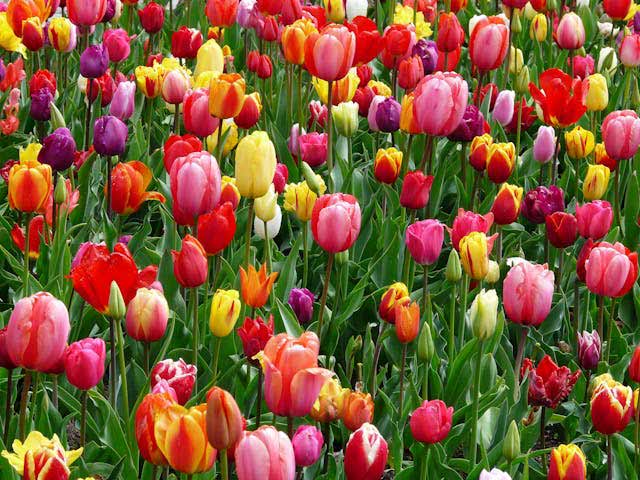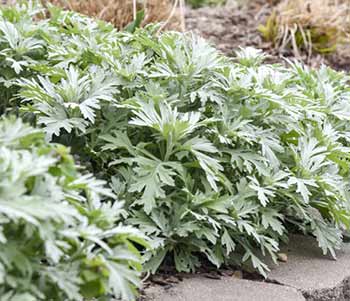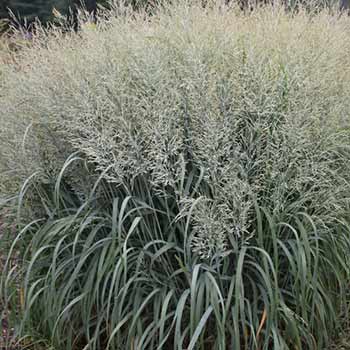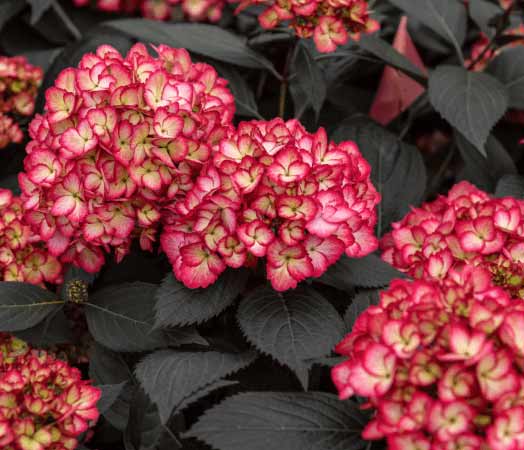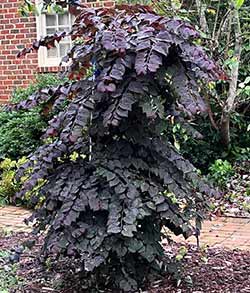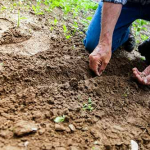May In The Seattle Garden By Bruce Bennett
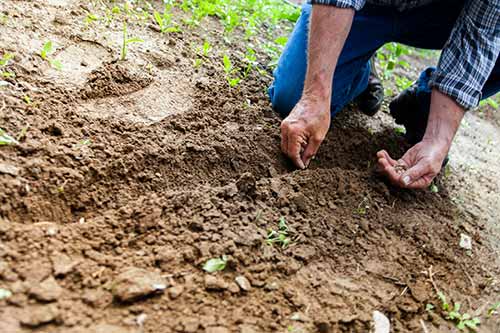
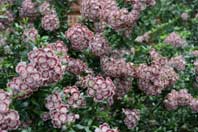
This month, I have taken to sitting on the back deck with my morning coffee in-hand and enjoying the fresh emerging beauty of springtime across the landscape. The new ruby-tinted foliage of the Andromeda/Lily-of-the-Valley Shrub ‘Variegata’ (Pieris japonica) echoes the red flowers of the ten-foot-tall Rhododendron ‘Vulcan’ and the newly opened buds of Azalea ‘Hino Crimson’.
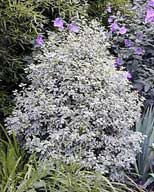
These plants are color counterpointed by the whites of the shrub New Zealand Pittosporum/ Kohuhu ‘Variegata’ (Pittosporum tenuifolium – pictured right), COSTCO-size pots of cascading green and white Wintercreeper ‘Emerald Gaiety’ (Euonymus fortunei) and the upright exclamation points of Sweet Iris ‘Variegata’ (Iris palida).
Later in the season, the flowers of Crabapple ‘Golden Raindrops’ (Malus transitoria) and Mountain Laurel ‘Olympic Fire’ (Kalmia latifolia – pictured left) will repeat this red and white color combination. The views and scents carried on the warming air make the work of gardening worth all the effort. The background of deep burgundy leaves from the Purple Smoke Bush ‘Purple Robe” (Cotinus coggygria), added to the blooming bulbs and emerging hostas, make all the colors in the yard POP. All this botanical wonder tells me we are in ‘the lovely month of May.’
We have passed the final major hurdle of winter – the Last Frost Date. Depending on your local micro-zone, this date is somewhat flexible. Even my own North Seattle dates will vary from one year to the next. These days, I’d say that April 15 – 20 is appropriate for most USDA Zone 8/9 plants. However, do remember that frost dates are based on historical climate data and are not set in stone. Over-all climate change will have these dates moving earlier in the year. The probability of frost occurring after the spring frost date or before the first autumn frost date is 30%, which means there’s still a chance of inflicting itself upon our yards before or after the stated dates! Always keep an eye on your local weather forecast and plan to protect tender new plants accordingly. Regardless of when the big box stores and garden centers begin selling herbs and vegetable starts, for me, the planting of warm weather taste-treats, such as basil, cilantro and the all-important tomatoes, does not happen until after May 1. As many of you already know, I’m a thrifty (AKA cheap) Connecticut Yankee and don’t intend to spend the money on these cold-tender plants more than once a year!
I usually say that I have a large ornamental and perennial garden. The fact is the entire area around the house is garden, with the only lawn to be seen in my surrounding neighbors’ yards (Hmmm, we may need to take a look at the topic lawn alternatives in the future – what do you think?). In order to stay on top of gardening tasks, my wife and I keep a loose schedule of jobs to be completed. By the end of March, the planting beds have been spring-cleaned and last year’s perennials cut back, as well as the shrubs that that flower on new wood. There is a bit of bed edging to do and fertilizers or compost to spread. In April, we transplanted and divided everything that needed it and, of course, started to add new plants to the ever-changing landscape. Let’s face it, gardens are never done! They continue to be works-in-progress and teach us that Life is all about change.
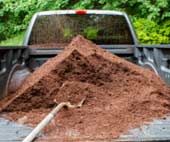
Now, it’s May and I can totally enjoy the beauty of last year’s work and this spring’s recent efforts. The biggest job on the May ‘To-Do List’ is mulching. I think there will be some two yards of medium-ground bark mulch in my near future. Remember, that one important reason to mulch is to keep the soil cool in the summer and retain moisture. If you are looking forward to planting annuals, let the soil warm up a bit more. If you plant your annuals too early in cold soil, they will just sit there doing nothing until a bunny (Easter or otherwise) comes along to eat the tender growth. It’s best to wait until May 15 to plant annuals in the ground. While you are waiting, though, if you haven’t already done it, plant your pots. Soil in pots gains heat much quicker than ground soil, so, plant them. I usually do mine by the end of April. Should we get a frost warning, move them into the garage overnight or stick a garden stake in the center of them and throw a tarp, sheet or piece of plastic over their heads to make a temporary cloche.
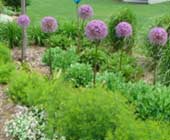
As the bulbs finish flowering here and there in the yard, they should be deadheaded. Cut just the spent flowers or entire flower stem off, but never the leaves. Cutting the leaves off prematurely will prevent the bulb from completing its photosynthesis process which allows the plant to convert the sun’s energy to necessary nutrients. In other words, the bulb will weaken and eventually disappear if you continue to cut off its green leaves. Wait until the leaves turn brown. You can fold the leaves with a rubber band to make browning leaves less noticeable. Planting your bulbs among later emerging perennials (I like hardy geraniums for this job) and groundcovers will also help to camouflage the withering leaves.
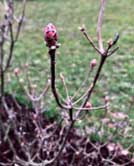
During April and May, you have been enjoying the blooms of all early flowering shrubs. May is the time to prune those shrubs if you want to reduce their size or otherwise change their shape. Also check for damaged, diseased or crossing branches and cut them out. If you pay attention to your azaleas, lilacs, rhododendrons, etc., you will notice that shortly after blooming they start setting next year’s buds. If you prune these shrubs in July, which many people do, you will get few-to-no flowers next year. Prune them shortly after they finish flowering before they set those new buds.
Now back to the mulch. Choosing the type of mulch to use is also a topic for another article. However, whatever you choose, wait until the soil is warm, then add two to four inches. Spread it carefully around your emerging perennials and shrubs and newly planted annuals. The mulch will not only make your garden look finished, it will also keep the soil cool in the heat of summer, help retain water, prevent weeds and add organic material to your soil. After spreading my mulch over a planting area, I like to use a pre-emergent, such as corn gluten, to prevent/reduce weed seed from germinating without damaging other plants that are already growing. When your neighbor’s dandelion seeds blow into your garden, the pre-emergent will stop them from developing for up to three months. Just remember not to spread it anywhere you are counting on certain flowers to self-seed.
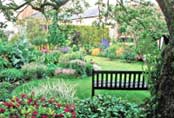
I think of March, April, and May as the building block months for gardens. When the above-mentioned tasks are completed and the mulch is spread, I see the hard work of the new gardening season is over (and I can rest my back). The remainder of the growing year consists of, basically, general light maintenance, watering, insect/disease vigilance and the all-round sensory enjoyment of what has been created (preferably from the back deck with a cup of coffee, in-hand of course). Happy gardening all!

Contributing columnist, Bruce Bennett, is a WSU Master Gardener, lecturer and garden designer. If you have questions concerning this article, have a gardening question to ask concerning your own landscape or want to suggest a topic for a future column, contact Bruce at gardenguy4u@gmail.com

